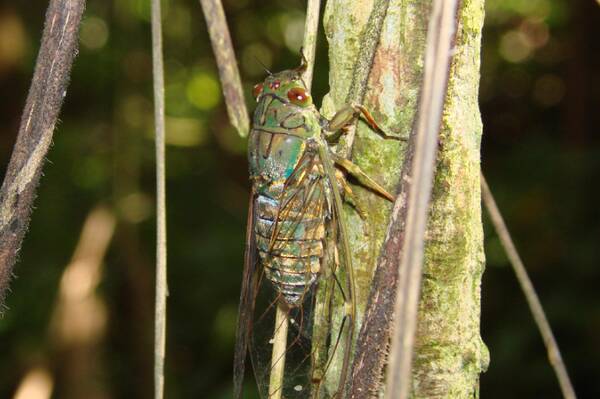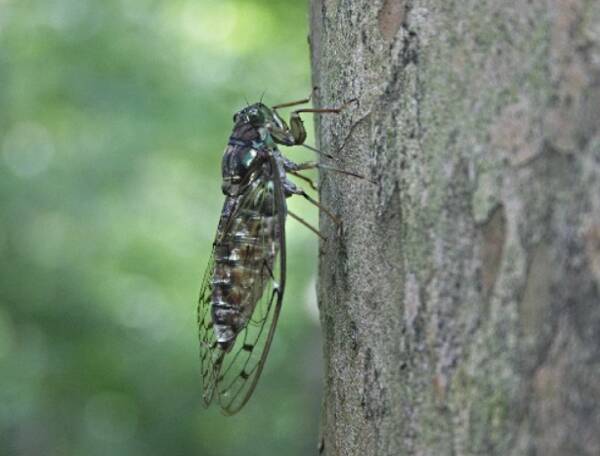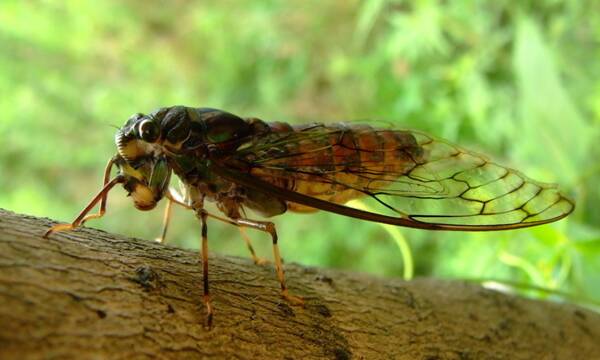Cicadas are the loudest hemipteran insects on the planet, which makes them some of the most annoying. There are many aliases, including Zhizhi, Xiao, Zhihou, Bicada, Haiyi, leech, leech, turtle, big turtle (adult), cicada turtle, monkey, leech turtle, Cicadas live in temperate to tropical regions of the world (more than 2,000 species of cicadas have been recorded), such as branch-climbing, tip-diving, cockroaches, cockroaches (larvae), etc. Including grasshopper (Cryptotympana atrata), cricket (Platypleura kaempferi), chirping cicada (Oncotumpana maculicollis), Yunnan bald tree cicada (scientific name: Centrotoscelus yunanensis), grass cicada, spotted cicada, thin-winged cicada, Takasago bear cicada, Taiwan Sao Cicada, black-winged cicada, red-eyed cicada, Taiwan black cicada, Shanxi Ji cicada, turtle pattern, autumn cicada, etc.

Cicada larvae live in the soil and have a pair of strong digging front legs. It uses its piercing-sucking mouthparts to suck sap from plant roots, weakening the tree's vigor, causing branches to die, and affecting tree growth. It usually stays in the soil for several years or even more than ten years. When it is about to emerge, it emerges from the soil surface at dusk and night, climbs to a tree, and then grasps the bark of the tree to molt and emerge. When a black crack appears on the back of the cicada pupa, the process of molting begins. The head comes out first, and then the green body and wrinkled wings are exposed. They stay for a while to harden the wings and darken the color, and then they start to take off. . The whole process takes about an hour. At the end of June, the larvae begin to emerge into adults. The newly emerged cicadas are green and have a maximum lifespan of about 60 to 70 days. In late July, female adults begin to lay eggs, and early and mid-August are the peak egg-laying periods. Most eggs are laid on branch tips with a thickness of 4 to 5 mm. In summer, it screams loudly on trees and uses its needle mouthparts to suck sap. The larvae live in the soil and suck sap from tree roots, which is harmful to trees.

If a cicada is disturbed while its wings are unfolding, the cicada will be disabled for life, may not be able to fly at all, and may be unable to make a sound.
The male cicada can sing. Its sound organ is in the abdominal muscles, like a big drum covered with a layer of tympanic membrane. The tympanic membrane is vibrated to make a sound. Since the chirping muscle can expand and contract about 10,000 times per second, there is a gap between the cover and the tympanic membrane. It is empty and can resonate, so its sound is particularly loud. And can take turns to use a variety of different tones to sing passionately. Male cicadas sing non-stop every day to lure female cicadas to mate. They cannot hear their "singing". Male cicadas of each species emit three different calls: a rally call, which is modulated by daily weather changes and the calls of other male cicadas; a courtship call before mating; and a harsh call when they are caught or startled and fly away. The female cicada's instrument structure is incomplete and cannot produce sound, so it is a "dumb cicada". Some species are easier to identify based on their song, behavior, and morphology.

Cicadas are distributed in temperate and tropical regions, inhabiting deserts, grasslands and forests. In addition to the three-day cicadas that appear in midsummer every year, there are also periodic cicadas. The most famous periodic cicadas are the seventeen-year cicada and the thirteen-year cicada, also known as the prime number cicada. Because their life cycle is a prime number, they will not encounter the natural enemies encountered in the previous generation. Periodic cicadas occur once in a certain area at certain intervals. At that time, dozens to hundreds of dark brown cicada larvae emerge from the soil and emerge together, which is very spectacular. Some species are easier to identify based on their song, behavior, and morphology.
Cicada slough is rich in chitin, protein, amino acids, organic acids, etc., and is often used to treat exogenous wind-heat, hoarse cough, sore throat, rubella and itching, red eyes, tetanus, epilepsy in children, and incessant crying at night. There are also records of eating cicadas in the ancient "Book of Rites". At that time, cicadas were not only food for ordinary people, but also became delicacies at the banquets of kings and nobles. The custom of eating cicadas is still preserved in many places. Cicadas can be eaten in a variety of ways, either braised or fried. It is a high-protein food like earthworms, grasshoppers, ants, bean bugs, silkworm pupae, scorpions, bee pupae and other insects. According to the determination of nutritionists, cicadas contain up to 72% protein, making them a natural nutritional product.
animal tags: cicada insect hemiptera cicada chirp mouthparts loudest sound
We created this article in conjunction with AI technology, then made sure it was fact-checked and edited by a Animals Top editor.